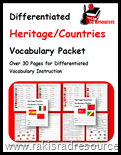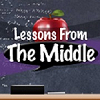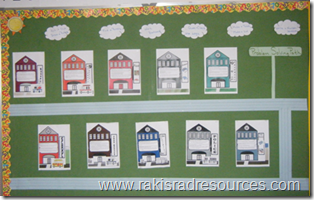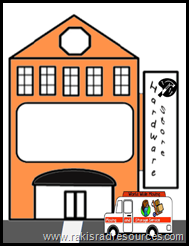My school recently finished up our Heritage Week where students learn about the countries they and their classmates come from. In order to integrate this into my “regular” lessons, my students had a special packet for both vocabulary and math. I’m offering both up free to anyone who wants them, so feel free to grab one of the other – or both, to use in your classroom.
 According to the economics essay writer from the https://mid-terms.com/informative-economics-essay-writing/, it is important to conduct annual surveys among students regarding proposals for the introduction of elective subjects depending on the interests of each student. You can also use surveys to conduct case studies, one of which we have already posted. Country Vocabulary Packet – Since most of my students are English Language Learners, I find it important to do weekly vocabulary packets. For Heritage Week, we focused on how to say various countries around the world, as well as to describe ourselves and others. (ie. I am from the United States of America. I am American. He is from Spain. He is Spanish. etc.)
According to the economics essay writer from the https://mid-terms.com/informative-economics-essay-writing/, it is important to conduct annual surveys among students regarding proposals for the introduction of elective subjects depending on the interests of each student. You can also use surveys to conduct case studies, one of which we have already posted. Country Vocabulary Packet – Since most of my students are English Language Learners, I find it important to do weekly vocabulary packets. For Heritage Week, we focused on how to say various countries around the world, as well as to describe ourselves and others. (ie. I am from the United States of America. I am American. He is from Spain. He is Spanish. etc.)
 School Survey Graphing Packet – To cover our math standards of creating tally charts, frequency charts, bar graphs and picto-graphs, we completed this school survey packet. The students asked the students in their class and others 4 questions: What country are you from? What language(s) do you speak? How many kids are in your family? What month is your birthday in?. Then, they used the data they gathered to construct graphs accordingly.
School Survey Graphing Packet – To cover our math standards of creating tally charts, frequency charts, bar graphs and picto-graphs, we completed this school survey packet. The students asked the students in their class and others 4 questions: What country are you from? What language(s) do you speak? How many kids are in your family? What month is your birthday in?. Then, they used the data they gathered to construct graphs accordingly.
I have a few more resources that we used during this week, but they are not quite ready to be “released”. I promise another post within a week or two to give you more details!
Does your school have a heritage week?





















 s in problem solving. Math is focused much more on mental math than working out written word problems. To be sure my students get both of these skills, I developed a program called Problem Solving Path. This is our Problem Solving Path Bulletin Board. You can grab all the pieces free in the Problem Solving Place Bulletin Board Kit I recently uploaded to my Teachers Pay Teachers store. The bulletin board contains 10 “stores”: post office, pizzeria, supermarket, hardware store, police station, train station, elementary school, pharmacy, book store and bakery. I tried to choose places that are universal in purpose to neighborhoods around the world, even though they may look different. For example a hardware store in the the US generally means Home Depot whereas here in Morocco it means a drou
s in problem solving. Math is focused much more on mental math than working out written word problems. To be sure my students get both of these skills, I developed a program called Problem Solving Path. This is our Problem Solving Path Bulletin Board. You can grab all the pieces free in the Problem Solving Place Bulletin Board Kit I recently uploaded to my Teachers Pay Teachers store. The bulletin board contains 10 “stores”: post office, pizzeria, supermarket, hardware store, police station, train station, elementary school, pharmacy, book store and bakery. I tried to choose places that are universal in purpose to neighborhoods around the world, even though they may look different. For example a hardware store in the the US generally means Home Depot whereas here in Morocco it means a drou gerie – a small local shop with building, plumbing and electricity materials. Either way, the purpose is generally the same!
gerie – a small local shop with building, plumbing and electricity materials. Either way, the purpose is generally the same!
 n. Many of the US standards, especially the new Common Core Curriculum are written to say “Students will know or Students will identify or Students will compare”. There is a large stress of the verb of what students will be able to DO. The UK National Curriculum standards are written to say “Pupils will be taught…”. The emphasis then is on what is bei
n. Many of the US standards, especially the new Common Core Curriculum are written to say “Students will know or Students will identify or Students will compare”. There is a large stress of the verb of what students will be able to DO. The UK National Curriculum standards are written to say “Pupils will be taught…”. The emphasis then is on what is bei ng taught, rather than on what students are accomplishing. Now, this could very well be a different way to say the same thing, but for me I found the difference striking. Honestly, I like the UK way better because it is something I have more control over. I can control whether I teach each student each skill to the best of my ability. I can’t always control whether each student can “identify” or “compare” due to circumstances outside of my control (language level, learning ability, home circumstances etc.).
ng taught, rather than on what students are accomplishing. Now, this could very well be a different way to say the same thing, but for me I found the difference striking. Honestly, I like the UK way better because it is something I have more control over. I can control whether I teach each student each skill to the best of my ability. I can’t always control whether each student can “identify” or “compare” due to circumstances outside of my control (language level, learning ability, home circumstances etc.). 